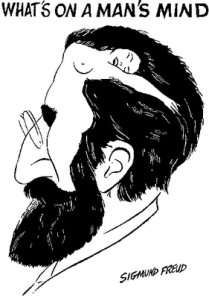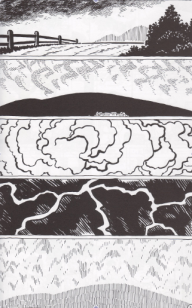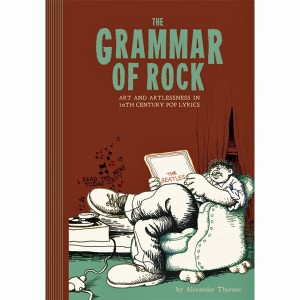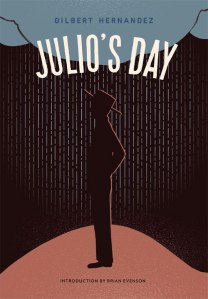Category: Reviews
American Horror Story: Murder House
This creepy show exudes brilliance at every frightening turn. The fine tuned class and sensuality of a film like American Beauty meets the best elements of every horror film you’ve ever loved. Continue reading
Reviewed: Ocean Beach Comedy at Winstons, May 24th Edition
By Allie Schulz
Thanks for the laughs, Ocean Beach Comedy! Here’s my review of the May 24th Show.
Friday night, Ocean Beach Comedy (OBC) at Winstons, in 4 parts.
Reviewed: 5 Best Academic Texts
Here at Diversions we take “text” to mean anything literary worth studying: novels, film, graphic narrative, and more. Yes, texts come in a variety of forms. So here are our top five favorite works that just exude sexuality.
 1. The Bio-Graphic Novel Freud For Beginners by Richard Appignanesi and Oscar Zarate. A summary of Freud’s life and works, in Graphic Novel format. Be ready, if you read this in public and people can see the illustration- you’ll be stared at. Incredibly wonderful, but graphic, drawings surround his theories, which are broken down quite nicely so that anyone can understand them. A favorite among all types of students. Check out the other “For Beginners” series.
1. The Bio-Graphic Novel Freud For Beginners by Richard Appignanesi and Oscar Zarate. A summary of Freud’s life and works, in Graphic Novel format. Be ready, if you read this in public and people can see the illustration- you’ll be stared at. Incredibly wonderful, but graphic, drawings surround his theories, which are broken down quite nicely so that anyone can understand them. A favorite among all types of students. Check out the other “For Beginners” series.
Event Review: 25th Annual MALAS Commencement
Reviewed by Nam Tran, Edited by Allie Schulz
Before me stood the delinquently mad and madly delinquent members of a guild comprised of a generation of polymaths, the future and new renaissance of a world awaiting its metamorphosis: the students and professors in the infamous MALAS- Master of Arts in Liberal Arts and Sciences- program at San Diego State University. The experiment beckoned for a mixture of equal parts curiosity, discipline, and support with emphasis on the “INTER-.” The dynamicisms originated from the conception of a motley crew of innovative pioneers. The idea was that a fusion of seemingly disconnected disciplines could yield a group of people to become capable and forward, backward, multi-directional thinking individuals. The experiment was a success and has continued to be a success for 25 years. That success, revealed by program director Bill Nericcio, is in large part because the program is filled with professors of the “people-person” genre. Continue reading
Reviewed: Spring Cultural Events in San Diego
This spring I didn’t leave San Diego for a minute, and I experienced a multitude of cultural and art events. Here I review the top 20:
1. A Play of The Bluest Eye @ Moxie Theater. What a great rendition, a lighthearted and fun retelling of a classic story. And one of the lead actresses goes to SDSU! Go Aztecs! The Moxie theater is right by campus, and is an intimate but professional space. Ticket prices were very reasonable, so I went to Urban Solace beforehand!! mmmmmm
2. Salon and Reading with poet Matthew Zapruder, at San Diego State. This guy is up there on the list of famous living poets, and was a truly engaging speaker. He leveled with the audience and talked to us like we were old friends, telling us all about his company, Wave Books, and the process of starting it. Most interesting was how he described and brought examples to illustrate the evolution of the Wave Books cover designs. Check them out here!
Reviewed: The Great Gatsby (2013 Film)
 What a movie! Directed by Baz Luhrmann, who brought us the wonderful Moulin Rouge!
What a movie! Directed by Baz Luhrmann, who brought us the wonderful Moulin Rouge!
Jay Gatsby is played by the gorgeous and apt Leonardo DiCaprio and Nick Carraway by the affable enough Toby Maguire.
Luhrmann’s Gatsby is a perfect re-telling of Fitzgerald’s great American novel, but modernized with bright fast-paced editing that speaks to the contemporary moment. 2013’s version of The Great Gatsby weaves in and out of love story and cultural commentary and in the vein of not just Moulin Rouge but of the epic Titanic was absolutely captivating. The story is about everything from falling in love to trying to meet expectations put forth by American panopticons to the emptiness one finds in a hyper-consumer lifestyle. The viewer becomes privy to a a time in which people are indulging in excesses, disillusioned from past traditions and because of the war, and when people with new money (either from stocks/bonds or from bootlegging) attempting to challenge the tradition of only old money as being respectable! Woo-hoo, what a ride.
And the music- YES! Fun stuff from the likes of Beyonce, Fregie, Will.I.Am, Florence and the Machine, Goyte and more. Luhrmann’s use of the JayZ/Kanye/Frank Ocean/The-Dream’s collaboration “No Church in the Wild” a song that so beautifully speaks to the zeitgeist of our times: an incredible choice. Another favorite: a hilarious rendition of “Crazy in Love” remixed by Kid Koala, one of the most unique DJ’s out there today!! All the music, wow. Currently listening to the hauntingly beautiful “Young and Beautiful” by Lana Del Rey from the soundtrack and I’m ready to go back and see the film again!
I also saw this in 3-D, and as my first 3-D movie I was awestruck not just by the visuals themselves but how they were used to enhance the story. The rain, the snow, the confetti at Gatsby’s parties– all lept off the screen, as did Carraway’s words as he typed. Magical. I can’t recommend this movie enough! Get out there and go see it! In 3-D!
Reviewed: The Year of Living Biblically by A.J. Jacobs
Have you ever tried reading the entire Bible in four weeks? That’s what bestselling author A.J. Jacobs did in preparation for one of his four New York Times Bestselling books, The Year of Living Biblically. Spawned from an outcast family member’s religiously unique life, Jacobs takes on “one man’s humble quest to follow the Bible as literally as possible.” Considering the many absurd rules in the Bible, this may seem ridiculous—if not impossible. However, Jacobs immerses readers into his life and biblical-living endeavor with intrigue, humor, and complete honesty.
Jacobs’ endeavor is ambitious to say the least. He sets aside twelve months of his life to devote to living biblically, working still for Esquire magazine and managing a family. After volumes of research, interviews, interactions and brave steps into the oddities of the Bible, Jacobs completes this daunting task, but it certainly provides its challenges along the way.
To begin his journey, Jacobs decides to embrace the Bible chronologically. Structurally, his book is separated into chapters by months. He also labels sections of each chapter by numbering days of his approximately 381 day spiritual journey. The pages are spaced nicely and Bible verses guide the discussions and progression of his biblical activities and daily encounters.
Jacobs approaches the Bible from an agnostic stance and a secular Jewish heritage. He explains to readers his religious experience, ultimately inviting readers into his spiritual journey, somewhat certain that this endeavor will not affect his religious stance significantly, but also wondering what impact it might have.
During his four weeks of intensive, five-hours-a-day Bible readings, Jacobs compiles a list of rules to adhere to from the Bible. He acknowledges, “I’ve decided I can’t” take every part of the Bible literally. “That’d be misleading, unnecessarily flip, and would result in missing body parts. No, instead my plan is this: I will try to find the original intent of the biblical rule or teaching and follow that to the letter” (10).
For many tasks he does a literal job, wearing tassels, avoiding mixed fiber clothing, not shaving facial hair, abiding by purity laws, following the ten commandments, stoning sinners, playing a horn on the first of every month, offering prayers each day, visiting Jerusalem, and many more. Some are purely comedic in today’s era; others pull the agnostic Jacobs closer to the potential of a divine Being.
His external appearance, a large bushy beard, white attire, even a staff sometimes, tassels hanging from his shirt—all of these may seem absurd in modern New York, but just as Jacobs’ outward appearance morphs to adhere to the biblical lifestyle, so does his inner self. He creates a biblical persona to differentiate himself. There is “A.J.” the original and “Jacob,” the Bible following self. Jacobs’ ethical arguments between his two conflicting selves are entertaining and very personal.
The whole book is personal. He invites readers into his family dynamics introducing readers to his wife, Julie, his son Jasper and his and his wife’s attempts to “be fruitful and multiply” as the Bible commands. Their journey to have a second child is well underway as Jacobs tries to live the Bible literally.
Part of the charm of the book is the inclusion of Jacobs’ personal life. Witnessing his honesty, hearing his mental progressions and watching his spiritual formation brings readers into the realness of the Bible and its many followers. His genuine openness to the oddities of the Bible and to listening to the Jews and Christians and considering the whys of what they do, opens him to understanding. However, while he understands why prayer is valuable to followers, or how Bible stories teach lessons of morality and guidance—not to lie, cheat, steal or give into lust—there are some concepts or laws in the Bible that are just too perplexing. So Jacobs seeks help from others. Jacobs acquires many mentors, spiritual guides, who offer their varying insights to some of the most perplexing concepts of the Bible such as eating locusts, finding the red heifer, snake handling, or taking a pigeon’s egg from a nest. All of these are odd, but as explained in his book, have some significant meaning, even if humans can’t fully explain.
His adventures are riveting, hilarious, and engaging. Jacobs writes as if you are there with him, using tasteful descriptions and fluid writing. As you hear of his ventures, you want to know more yourself. You are wondering what you believe and why.
This book is a fascinating read. It covers a year of life. It’s a man’s story of faith or lack thereof, a journey of seeking to understand the Divine through many lenses. Literal versus figurative, Jews and Christians, churches, rituals, tasks, rules—all of these he delves into and readers get to see one man’s quest to understand the benefits and negatives of religion.
I highly recommend this read. You won’t be able to put it down and you’ll enjoy its blunt but genuine way of confronting the Bible, an ancient text, in today’s modern world.
Pros
You will laugh out loud
Your own preconceptions of the Bible may be challenged
Cons
Some animals are killed throughout the duration of this book
The book deals with lust and other sexual content
Source: Jacobs, A.J. The Year of Living Biblically. New York: Simon & Schuster Paperbacks, 2007. Print.
Reviewed: SDSU’s MFA Graduation Celebration Reading

On May 3rd, 2013, at 8:15pm, San Diego State University’s Creative Writing program hosted a “Graduation Celebration Reading” to celebrate the Master of Fine Arts graduating students. Faculty members and eager listeners joined together to share in this intimate ceremony, celebrating accomplishments.
The event occurred on a cool Friday evening in the SDSU campus’s Scripp’s Cottage building, surrounded by grassy fields, flowering trees, and rippling ponds with bright koi fish and turtles. Upon entering the charming cottage, a mildly lit room, with brown and golden designed carpet, three columns of chairs, and a small stage welcomed the attendees. Many chatted with familiar friends and acquaintances, nibbled on refreshments and then took their seats, facing a stage, graced by a lone podium and microphone.
After a slight delay, the reading began and was introduced by SDSU’s Assistant Professor, Katie Farris. She welcomed listeners and announced that these graduating students would be reading from their own, original works.
Around 15 students comprise the MFA Creative Writing program, creating an intimate and familial atmosphere between the academics. The schedule and the mood for the evening was informal and friendly. Reading participants sat within the crowd of listeners by their loved ones, emerging from the audience as they were announced. Each prior reader was to introduce the following. Since the students appeared to know each other well, introductions ranged from professional to describing friend-like qualities. The varying students stood uniquely, wearing an array of fancy dresses and heels to a more “every-day” traditional style, emphasizing the lax atmosphere. One reader even invited his children up on stage to read with him!
News of engagements and mentions of husbands and friends made the introductions seem personable—more like a gathering and less like an event. Due to trolley delays, an impromptu intermission occurred so that some late guests could be present. While unexpected, it became obvious that this reading was genuinely meaningful for these graduating MFA participants and it was important to have friends and colleagues, who had helped them to this point in their academic and professional careers, present.
Each participating graduating student read either one page from a short story or up to two poems from his or her collections. The poems were beautiful and flowed off the lips of their readers. Additionally, the two fiction pieces captured attention from the audience, all earning generous applauses at each conclusion.
SDSU houses a talented Creative Writing program, as evidenced by the beautiful works of the participants in this graduation reading. The event encapsulated a personable and genuine atmosphere, reminding attendees of the inclusivity of this community. The Graduation Celebration Reading was a rewarding time for graduate students to reflect on their accomplishments and share with an audience. Events like these are memorable and all are always welcoming aspiring artists or lovers of literature to attend.
The following includes a list of the reading participants:
Francine Rockey
Ryan Forsythe
Laura Hoopes
Erica Johnson
Seretta Martin
Laura Praytor
Susan Hogan
Annette Robichaud
Jen Lagedrost
Rachel Gellman
Kaitlin Dyer
Erin Rodoni
Aimee Fagent
If you’d like to learn more about SDSU’s MFA program, look here!
Reviewed: Julio’s Day and Marble Season by Gilbert Hernandez.
In April Gilbert Hernandez released not one but two beautiful new graphic novels, Julio’s Day and Marble Season.
I loved the simplicity of this beautiful book! A meditation on the inevitably cyclical nature of life and of time; how storms rage, the sun shines, and then it all happens again. In Julio’s Day graphic novelist Gilbert Hernandez follows the story of Julio: starting in 1900 with his birth and ending in 2000 with his death. Certain plot nuances just make the story absolutely twisted and still offer an incredibly meaningful narrative that has the potential to make an impact on readers and their thoughts on the particularly deep subject of the meaning of life.
Hernandez– always the ontological explorer– does an excellent job juxtaposing both tragedy and celebration against the experience of contemporary person-hood. Not a few pages in and Julio’s mother shares her wisdom with the young boy:
“I don’t feel so sad when somebody dies, Julio, because they fly away to explore the stars and planets.”
Her calming words on the scary subject of death set the stage for the rest of the story, where readers will encounter Julio and his network of family and friends as they face both good times and bad times.
Julio and other characters will be bullied, will be lonely, will be brave… will just “be”. Hernandez is able to capture not only a multitude of human emotions but his studies are fine-tuned; the writing and illustrating breathe life into these fictional people. Hernandez seeks to explore the origins of a character, finding a way to acknowledge the neuroses that are tied to behaviors- especially in deviant/violent behavior. Freud’s theory of the unconscious deeply affected the 20th century, so it was nice to see this studied.
Julio’s Day is an absolute must read for those interested in the study of ontology— the nature of being— which is hopefully just about everyone!

Pro: This is the kind of book you’ll want to add to your home library. This beautiful hardcover edition comes with the added bonus of a quality forward by writer and scholar Brian Evenson.
Pro: Hernandez is a gifted storyteller. The emotive nature of this book leaps off the page. The imagery is powerful!
Con: You’ve got to slow down and be patient with the story. Allow yourself time to reflect not only on each panel, but on the spaces between the panels, which can be just as telling.
Con: Especially because most of the characters are related, and they are all aging so quickly, it was easy for me to get them confused. But Hernandez does provide a great cast of characters that can always be referenced!
There are similar books (such as Galleano’s “Century of the Wind”) that tell the story of the 20th century through a fictional accounts grounded in historical facts– and Hernandez joins the ranks with this incredible account of Julio and his experience throughout the century. Read this book, and be ready to get emotional (in the best possible way!) !
Marble Season
A very cool story of the experience of young Huey and the escapades he gets into with his brothers and his friends in their neighborhood.
Marble Season is partly based on the authors own life.
Huey’s boyhood love for fun and fiction shine through the pages of this graphic novel. Caught between worlds- of an older brother and a younger brother, Huey adores writing and acting out stories and is always reading comic books. His character is multifaceted, however, and he gets into some trouble both as a boy and as a creative soul. He hits roadblocks and makes some poor decisions– albeit pretty innocently– throughout.
There’s something in this book that induces a sharp nostalgia for a return to the feeling of childhood innocence. It is quite an indulgence to put yourself in that mode and explore the story through that lens.
Pro: Another great hardcover book, with a thorough afterword by Corey K. Creekmur from the University of Iowa and a “detailing of pop culture references” page that Hernandez has constructed.
Pro: Safe for younger or more conservative audiences, as opposed to most other Hernandez works.
Con: This book left a good impression on me, but the subject just wasn’t as interesting to me as I think it will be for others, especially guys!
Con: I’d loved to have seen Hernandez use some color in this book! At least we got the cool covers out of the two books.
Remember, we’re giving away our copies of these two fine graphic novels! Enter here!
Reviewed: The Grammar of Rock: Art and Artlessness in 20th Century Pop Lyrics

Popular music in America, at least over the last couple of decades, has, in my opinion, disintegrated into meaninglessness and timeliness, with lyrics that are undeniably catchy but equally as terrible and lacking in substance and philosophical fortitude. Musicians today seem to be simply trying to produce music that will sell rather than focusing on music that is of the highest quality, particularly lyrically. Older artists, such as Marvin Gaye, Simon and Garfunkel, Stevie Wonder, Michael Jackson, Fleetwood Mac, Led Zeppelin, The Who, and dozens more, had a much better sense of what to write their music around. Cliche as it sounds, kids these days just don’t possess the same level of recognition or appreciation for great music. Being quite the music fanatic myself, able to appreciate works from almost every genre, I was very interested to read what Alexander Theroux had to say about musical lyrics. Rather than taking the standpoint of an all-knowing, official, academically certified scholar whose input on 20th century music’s lyrics should be taken as matter-of-fact, Theroux wrote his book more in the form of an essay with a rather conversational, amenable voice. It is as if he was attempting to give readers a sense of what it’s like to chat with him about the topic of 20th century musical lyrics. He writes with a satirical, rough, and, at times, cruel tone that some readers may very well find off-putting. He points to many songs’ downfall in their lyrics’ grammatical flaws, topical, disorganized and unrelated subject-matter, and overall haphazardness and meaninglessness. Whether done so intentionally or not, the book itself has its fair share of grammatical and structural issues, and left me wondering what exactly his purpose was for writing it.
For a book whose title, I’m sure, intrigues a large percentage of both music and book lovers, The Grammar of Rock: Art and Artlessness in 20th Century Pop Lyrics may start off solidly, but ultimately is very poorly written and organized, shallow and pedantic. The idea of analyzing song lyrics as a form of literature is a very interesting one, but one that Theroux is never able to explore fully or fairly. With such an interesting concept for a book, readers, much like I was, must’ve been chomping at the bit to get through it. Not too far in, it became a rather painful and distasteful experience, and one that I wanted to end immediately. It is clear from reading that the author is a wise man with some interesting ideas dispersed throughout, however the book fails to satisfy what readers were hoping it would – an interest in the evolution and explication of musical lyrics and analyses of songs as pieces of literature. A mere 40 pages in (out of the book’s 350 pages total), the author had portrayed himself as a cynical, old, out-of-touch writer whose curbed opinions should be taken as matter-of-fact. There is no doubt a quirkiness to his writing, which he seems to feel allows him to spew unfounded criticism in the form of jabs and jokes at not only the musical artists, but also the fans of such music. Theroux writes in a manner that can be described as arrogant, pompous, autocratic, and misguided as he attacks seemingly the whole population of poorly educated Americans who appreciate music for all the wrong reasons.
Theroux does make some valid arguments, pointing to music’s tendency to disregard proper grammar, pronunciation, and dialect, however fails to realize that doing so is often necessary in order for musical artists to maintain appropriate rhyme and meter, much like what poets must often do. His inability to permit any sort of dialectic imprecision inhibits him from being able to appreciate music for what it’s worth. One example of this that I loved was his ability to “permit” song titles and lyrics such as Billy Paul’s “Me and Mrs. Jones,” alluding to the fact that while “Mrs. Jones and I” would be the grammatically correct form, it would not have the same “backstreet sordidness” of the original song’s title and lyric. I was certainly able to appreciate the humor he includes within his analyses, whether done so intentionally or not, as it helps to lighten the mood and soften the rigid strictness of most of the book. While allowing certain permissions, such as “Me and Mrs. Jones,” Theroux seems unable to help himself from spending several pages condemning grammatical blunders and misusages, incongruities, contradictions, and improperly used expressions or phrases. I certainly don’t believe, after reading his book, that Theroux intended coming off as so pompous that it’s humorous, but that is absolutely the feeling I was left with and am thus able to appreciate the work, if for no other reason than that.








